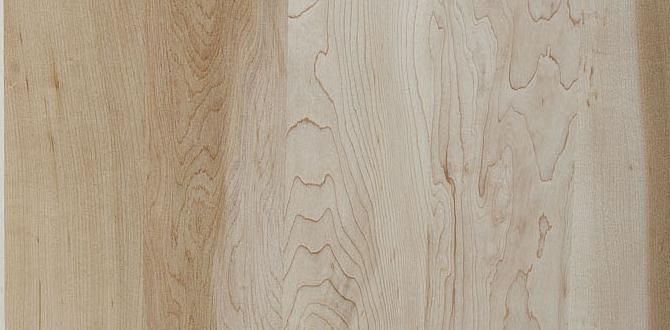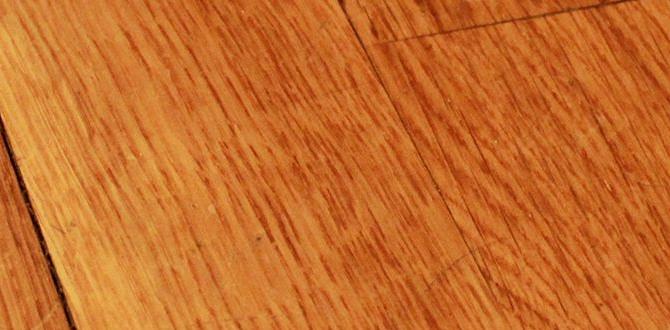To safely disassemble a nailer, always disconnect the power source (air hose or battery), clear any remaining nails from the magazine, wear safety glasses, and follow the manufacturer’s specific instructions. Familiarize yourself with the nailer’s parts and proceed slowly and deliberately to avoid injury or damaging the tool.
Hey there, fellow DIYer! Ever find yourself ready to clean, repair, or simply store your trusty nailer, only to pause and wonder, “How do I take this thing apart safely?” It’s a common question, especially when you’re diving into tool maintenance for the first time. Nailers, while incredibly useful, can be a bit intimidating when it comes to disassembly. The last thing any of us want is a surprise nail firing during maintenance or a crucial part getting lost or damaged. But don’t worry! Taking apart your nailer doesn’t have to be a headache. With a few simple steps and a focus on safety, you can confidently tackle this task. We’ll walk through everything you need to know, from gathering your tools to putting it all back together. Let’s get your nailer in tip-top shape safely!
Table of Contents
Why Disassemble Your Nailer?
So, why would you even need to take your nailer apart? There are several good reasons why you might need to disassemble your nailer, and understanding these can help you appreciate the importance of knowing how to do it safely.
- Cleaning and Maintenance: Over time, dust, debris, and sawdust can build up inside your nailer. Regular cleaning, which may involve some disassembly, is crucial for optimal performance and longevity. A clean tool is a happy tool!
- Troubleshooting Issues: If your nailer isn’t firing correctly, is jamming frequently, or is making strange noises, a gentle disassembly might be necessary to identify and fix the problem. Sometimes, a stubborn piece of debris is the culprit.
- Replacing Worn Parts: Like any mechanical tool, nailer parts can wear out. Accessing specific components might require partial disassembly to replace O-rings, seals, springs, or other small but vital parts.
- Preparing for Storage: For long-term storage, especially in varying temperatures or humid conditions, a quick clean and perhaps a very light lubrication (check your manual!) after disassembly can protect your tool.
- Getting to Know Your Tool: For the curious DIYer, understanding how your tools work on the inside is incredibly rewarding. Disassembly, done safely, is a fantastic way to learn about the mechanics of your nailer.
Essential Safety First: Before You Start
Safety isn’t just a suggestion; it’s the absolute cornerstone of any DIY task, especially when dealing with tools that drive fasteners at high speeds. Before we even think about touching a screw, let’s make sure we’re setting ourselves up for success and, most importantly, staying safe.
1. Disconnect the Power Source – No Exceptions!
This is the golden rule. Your nailer is powered either by compressed air or a battery, and this power source must be completely disengaged.
For Pneumatic (Air) Nailers:
- Completely disconnect the air hose from the nailer. Don’t just turn off the compressor; physically unhook the hose.
- If your compressor has a regulator, ensure it’s at zero pressure, but again, the physical disconnection is key.
For Cordless (Battery) Nailers:
- Remove the battery pack from the tool. Make sure it’s fully disengaged. If there’s a way to lock the battery compartment, use it.
For Electric (Corded) Nailers:
- Unplug the tool from the electrical outlet. Double-check that the cord isn’t snagged or about to be accidentally plugged back in.
2. Clear the Magazine
This is another critical step to prevent accidental firing.
- Ensure there are no nails loaded in the magazine chamber.
- If there are, carefully slide them out. Some nailers have a release lever or mechanism to help unload the magazine safely.
3. Wear Safety Glasses
Even when a tool is disconnected, small springs or parts could potentially dislodge unexpectedly. Safety glasses protect your eyes from dust, debris, or tiny components that might pop free. This is non-negotiable.
4. Work in a Well-Lit, Organized Area
Good lighting helps you see what you’re doing and avoid missing small parts. Working in a clean, uncluttered space prevents dropped screws from rolling away or getting lost under piles of materials.
5. Consult Your Nailer’s Manual
Every nailer is a little different. While general principles apply, your manufacturer’s manual is the ultimate guide. It will have specific diagrams, warnings, and instructions tailored to your exact model. If you don’t have a physical copy, a quick search on the manufacturer’s website will likely get you a downloadable PDF. You can usually find model numbers on the tool’s casing.
Tools You Might Need
While many nailers are designed for simple operation, some disassembly for maintenance or repair might require a few basic tools. Most of the time, it’s nothing fancy!
- Safety Glasses: Absolutely essential.
- Gloves: Protect your hands from sharp edges or grease.
- Screwdrivers: Typically Phillips head or flathead, in various small to medium sizes.
- Allen Wrenches (Hex Keys): Some models use these for specific fasteners.
- Pliers: Needle-nose pliers can be helpful for gripping small springs or retaining clips.
- Small Container or Tray: To keep screws and small parts organized and prevent loss. Magnetic trays are fantastic for this!
- Compressed Air/Brush: For cleaning parts after disassembly.
- Manufacturer-Specific Tools: Very rarely, a specialized tool might be recommended by the manufacturer for specific tasks. This is uncommon for basic disassembly.
Step-by-Step: Safely Disassembling Your Nailer
Let’s break down the process into manageable steps. Remember to always refer to your specific nailer’s manual for precise instructions.
Step 1: Power Down and Clear
As we’ve stressed, this is the absolute first and most crucial step.
- Disconnect Power: Unplug your electric nailer, remove the battery from your cordless nailer, or disconnect the air hose from your pneumatic nailer.
- Empty Magazine: Ensure there are no nails left in the loading area.
- Dry Fire (Optional, but Recommended): With the power source OFF, briefly squeeze the trigger. This can help release any residual air pressure in pneumatic models or tension in internal mechanisms, ensuring the tool is truly “dead.” Do this carefully and without nails loaded.
Step 2: Identify the Access Points
Most nailers are designed to be accessed for basic maintenance without needing to take the entire tool apart. Look for:
- The Nose/Tip: Often, the front part of the nailer can be opened or removed to clear jams or perform minor cleaning.
- Magazine Covers/Panels: These allow access to the nail feeding mechanism.
- Handle Covers/Grips: Sometimes screws are hidden beneath these, giving access to internal firing mechanisms.
Step 3: Locate and Remove Fasteners
Once you know where to look, you’ll find screws holding various parts together.
- Use the Right Screwdriver: Always use a screwdriver that fits the screw head snugly. Using the wrong size can strip the screw head, making it much harder to remove.
- Keep Track of Screws: This is where your small container or magnetic tray comes in handy. As you remove each screw, place it in your tray and note where it came from. Some screws might be different lengths or have different thread types. For example, screws holding the main housing together might be longer than those retaining a small cover.
- Work Systematically: If you’re removing a panel, start with the visible screws. If a panel seems stuck after removing screws, check for any hidden clips or fasteners. Gently wiggle the part.
Step 4: Gentle Separation of Parts
Once screws are removed, the parts should separate. This is where patience is key.
- Don’t Force It: If a part isn’t coming apart easily, check again for any missed screws, clips, or internal locking tabs.
- Watch for Springs: Internal mechanisms, especially in pneumatic nailers, often involve springs. Be prepared for these to gently release and keep them contained. Sometimes, a spring might be under tension, so it’s wise to keep a finger or a tool near it to prevent it from flying across the room.
- Diagramming: If you think you’ll need to reassemble a complex part, taking a quick photo with your phone as you go can be a lifedown.
Step 5: Cleaning and Inspection
With the relevant parts separated, you can now clean and inspect.
- Remove Debris: Use compressed air (wear eye protection!) or a small brush to clear out dust, sawdust, and any old lubricant.
- Wipe Down: A clean, lint-free cloth can be used to wipe down metal and plastic parts.
- Inspect for Damage: Look for any signs of wear, cracks, or damage on O-rings, seals, springs, or the driver blade.
Step 6: Reassembly
Reassembly is usually the reverse of disassembly.
- Reverse Order: Put the parts back together in the reverse order you took them apart.
- Align Carefully: Ensure all components are properly aligned before inserting screws.
- Don’t Overtighten: Tighten screws firmly but avoid overtightening, which can strip threads or crack plastic housings.
- Check for Smooth Operation: Once reassembled, and before reconnecting the power source, gently operate any triggers or levers to ensure everything moves freely.
Disassembling Specific Types of Nailers
While the general principles apply to all nailers, there are subtle differences based on their power source and design.
Pneumatic (Air) Nailers
These are the most common in professional woodworking and construction. They rely on compressed air.
Key Areas for Disassembly:
- The Magazine: Often secured by screws that allow it to be removed or folded back for clearing jams and loading.
- The Piston Housing/Top Cover: This usually requires removing screws to access the driver blade, piston, and O-rings. Be cautious of springs here.
- The Trigger Assembly: Sometimes accessible by removing grip panels or housing screws.
Important Considerations for Pneumatic Nailers:
- Residual Air Pressure: Even with the hose disconnected, a small amount of air might be trapped. Gently pressing the trigger after disconnecting the hose helps bleed this off.
- Lubrication: Most modern pneumatic nailers don’t require regular oiling of their air intake. Check your manual; over-oiling can cause issues. Some require light lubricant for specific internal parts during overhaul, but this is usually for experienced users.
- Springs and Seals: These are common wear items. If you’re experiencing leaks or inconsistent power, these might be the culprits.
Cordless (Battery) Nailers
These offer portability without an air hose.
Key Areas for Disassembly:
- Magazine: Similar to pneumatic nailers, access here is for clearing jams.
- Motor/Battery Housing: If you need to get deeper into the tool, screws here will give access. This is less common for routine cleaning.
- Drive Mechanism: Similar to pneumatic, access to the driver, piston, and associated parts usually involves removing housing screws.
Important Considerations for Cordless Nailers:
- Electronics: Be extra careful not to damage wires or electronic components if you are disassembling the main body.
- Battery Seals: Ensure the battery compartment remains clean and free from debris to maintain good contact.
- Complexity: Cordless tools often have more complex internal mechanisms and electronics, so only disassemble to the extent necessary.
Electric (Corded) Nailers
These are less common for DIYers compared to the other two, often used for lighter-duty tasks.
Key Areas for Disassembly:
- Magazine: For jams. This is a very common point of access.
- Housing Covers: Similar to other types, screws allow access to internal components for cleaning or minor repairs.
- Drive Mechanism: Access to the driver blade and related parts.
Important Considerations for Electric Nailers:
- Power Cord: Ensure the power cord is undamaged and properly seated in its housing if you are disassembling near that area.
- Motor Ventilation: Keep air vents clear of dust and debris.
- Simplicity: Generally, electric nailers are mechanically simpler internal than their cordless counterparts.
Common Nailer Jams and How Disassembly Helps
Nail jams are probably the most frequent reason beginners need to disassemble a nailer. Knowing how to handle them safely can save you a lot of frustration.
Typical Jam Scenarios:
- Bent Nail: A nail that isn’t perfectly straight can misfeed and get stuck.
- Double Firing: Sometimes, a nailer can fire twice in quick succession, causing nails to overlap and jam.
- Improper Nail Loading: Nails not seated correctly in the magazine can cause feeding issues.
- Debris in the Magazine: Small pieces of wood or dirt wedged in the track can prevent smooth nail feeding.
How Disassembly Solves Jams:
For a jam, you often only need to disassemble the “nose” or front part of the nailer, and sometimes the magazine.**
- Disconnect Power & Clear Magazine: Always the first step.
- Access the Jam Area: This usually involves removing a few small screws on the nose of the nailer, allowing you to open a small plate or cover. Some nailers have a nose release mechanism you can engage.
- Gently Remove Stuck Nail: With the area exposed, you can often carefully pull out the offending nail with needle-nose pliers or tweezers. Avoid using excessive force, which could damage the driver blade or the nose assembly.
- Inspect Driver Blade: Check if the driver blade (the part that strikes the nail head) looks bent or damaged.
- Clean the Area: Brush away any debris that might have contributed to the jam.
- Reassemble Carefully: Ensure all screws are replaced and tightened properly.
If jams are frequent and not caused by user error (like using incorrect nails), it might indicate internal wear and tear, requiring a more in-depth look or professional service. You can learn more about common nailer problems and their solutions from resources like ToolReview.com’s guide on nail gun jams.
Troubleshooting Common Issues Post-Disassembly
Sometimes, reassembly can introduce new issues if not done perfectly. Here are a few common things to watch out for:
Problem: Nailer fires, but barely penetrates or misfires.
Possible Causes:
- Loose Fastener: A screw holding the main housing or piston seal might be loose, causing air leaks.
- Dried/Damaged Seals: O-rings or seals may not have been properly reinstalled or might be worn out, leading to air leaks.
- Springs Not Seated: A spring might not be in its correct position, affecting the firing mechanism.
Solution: Double-check all screws are tight. Re-inspect seals and springs during reassembly, referencing your manual. For pneumatic nailers, check for air leaks by listening carefully when connected to an air source (no nails loaded!).
Problem: Trigger feels stiff or doesn’t reset properly.
Possible Causes:
- Misaligned Parts: Internal components might not be perfectly aligned after reassembly, causing binding.
- Debris in Trigger Mechanism: Small pieces of dirt or dust could be obstructing the trigger.
- Overtightened Screws: Screws that are too tight can warp the housing and cause parts to bind.
Solution: Loosen and retighten housing screws slightly, ensuring they compress the parts evenly. Ensure the trigger mechanism assembly is clean and properly seated.
Problem: Nails are not driving straight.
Possible Causes:
- Bent Driver Blade: If you previously had a jam and didn’t inspect or fix a bent driver blade.
- Worn Nose Piece: The guiding mechanism at the front of the nailer might be damaged.
- Improper Nailer



